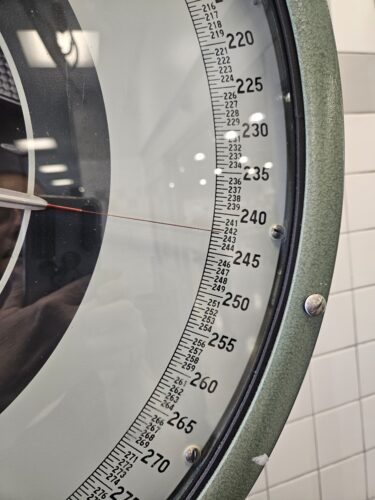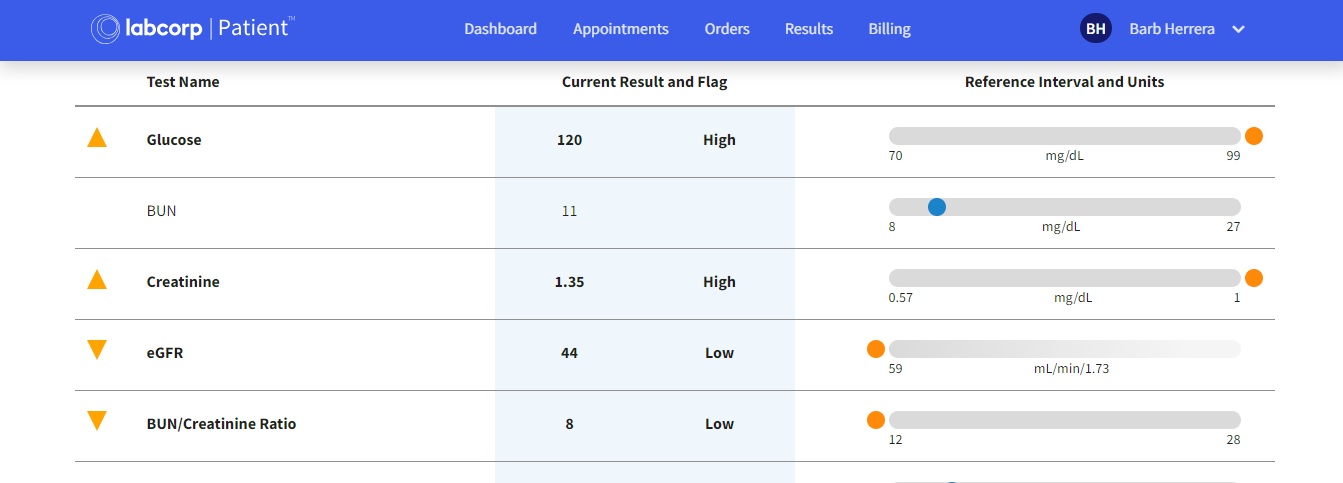I read the Medscape article entitled “Will Changing the Term ‘Obesity’ Reduce Stigma?” and learned the terms “Clinical Obesity” and “Pre-clinical Obesity.” I immediately changed my terminology from “They have obesity or overweight,” to “They have clinical obesity” or “They have pre-clinical obesity.”
The words Obesity and Overweight are commonly used today to designate if someone has an issue with weight and/or illnesses around their weight. Instead of a person who is obese, we say the person has obesity. No more saying the person is overweight, but that the person has overweight, which I find clumsy. People are not diabetics, they are people with diabetes. Define the person before the disease, or issue at hand. People are not “Bipolar,” they are (I am) a person with Bipolar Disorder.
The World Health Organization defines things this way:
Overweight is a condition of excessive fat deposits.
Overweight is a BMI greater than or equal to 25
Obesity is a chronic complex disease defined by excessive fat deposits that can impair health. Obesity can lead to increased risk of type 2 diabetes and heart disease, it can affect bone health and reproduction, it increases the risk of certain cancers. Obesity influences the quality of living, such as sleeping or moving.
Obesity is a BMI greater than or equal to 30
All of this nomenclature seems to set folks apart from those who are being called out as so-called “vanity users” of the GLP-1s.
Thin Folks Also Get Type 2 Diabetes
None of this addresses the thinner people who get Type 2 Diabetes. I hear the belief that Asians don’t get diabetes because they are not clinically obese, but of the ten highest percentage of people with diabetes, Asian countries hold seven of those slots. The United States is in fourth position. Of all the people with Type 2 diabetes in the world, 60% of them are Asians even though most are in the “normal” BMI range. While other races and ethnicities put on subcutaneous fat, Asians have more visceral fat than subcutaneous. Asians have a higher percentage of Type 2 Diabetes than non-Hispanic whites.
Whatever race or ethnicity, for all we know, the person could have Type 2 diabetes even with a BMI of 20. Not one of us can judge someone for using GLP-1s simply on looks because we aren’t privy to their genetics or what their medical health is. We also have no right to ask people why they are on GLP-1s because what goes on behind closed doors between a patient and a care provider is none of our business.
Back to Naming the Disease
The proposal being finalized would acknowledge a preclinical stage of obesity characterized by alterations in cells or tissues that lead to changes in organ structure, but not function. This stage can be measured by body mass index (BMI) or waist circumference.
The clinical stage occurs when “obesity already affects [the function of] organs, tissues, and functions like mobility. Here, it is a disease per se. And an active disease requires treatment,” said (Ricardo Cohen, MD, PhD, coordinator of the Obesity and Diabetes Center at the Oswaldo Cruz German Hospital in São Paulo, Brazil) Cohen. The health risks associated with excess adiposity have already materialized and can be objectively documented through specific signs and symptoms. (emphasis mine)
Isn’t that the best terminology ever? I am thrilled to have words that are clearer to folks who roll their eyes when we say we are on Mounjaro, Zepbound, Ozempic, Wegovy, Saxenda, or any of the other GLP-1s.
Obesity is a Dirty Word
I hate the term “obese.” Add to that, “morbidly obese,” (changed into “severe obesity” fairly recently) a word that makes one feel like they have one foot in the grave. “Extremely morbidly obese,” is even worse than that. They might as well call us slovenly pigs with our snouts in the trough inhaling food at a light-of-speed rate because that’s how it feels.
I have read the word “obese” throughout my lifetime inside my medical records.
An aside: Did you know you can have the Medical Records department at doctor’s offices, hospitals, and clinics send you your records via email? No more going and paying $1.50 a page to get your own records that care providers got for free. Somewhere along the way, someone invented a program that could put our name in a computer and within minutes they can ZIP you a file with everything they have on you! If you need help with how to do it, let me know in the comments.
Back to medical records.
I wish I had a dime for every time the word “obese” is mentioned in my chart. Yeah, yeah, I know it is supposed to be a clinical term, but it is also used as an epithet. Sometimes, in my chart, I remember the doctor looking down and writing notes, while glancing up looking at me with disdain. I know, because I know, they are thinking, “This is the laziest patient ever. I have counseled her a hundred times to lose weight and exercise and she ignores me. I am at a loss for how to get her to understand she is going to DIE unless she changes her lifestyle.” As a matter of fact, I wish I had a penny for every time I’ve been told to change my diet and exercise more. With the dimes and pennies, I could get my extra skin removed today!

Even the World Health Organization has gotten in on the re-naming. In “Adults aged ≥ 15 years who are pre-obese (%)” they say:
Pre-obese adults (BMI 25.0-29.9) are at increased risk of adverse metabolic outcomes including increased blood pressure, cholesterol, triglycerides, and insulin resistance.
Not sure how I feel about the term “pre-obese.” It sounds like the person is doomed to having clinical obesity. Were we doomed when our BMIs were 25.0 to 29.9? Aren’t people with those BMIs sometimes forever in that range? I get what they’re saying but it’s not exact enough.
The Search for Proper Terminology
I’ve worked with a few doctors over the years to try and get better terms than obese and morbidly obese, but still getting the point across that the person had issues with their weight. I’ve used “fat” for myself for decades. Fat is an adjective to me, but doesn’t work for anything medical. Can you imagine if you saw “Patient is fat and is having lab tests for diabetes?” The word fat is too… simple? Crass? Even rude unless the person themselves uses the word for themselves. Like I do!
I had an idea for a rating system before I saw there was this one already. Stages I, II, III, IV, V of Obesity. What sucks about it is it continues to use the antiquated, arbitrary, and often completely wrong BMI as the levels of rating.
Class I: BMI of 30–34.9
Class II: BMI of 35–39.9
Class III: BMI of 40 or more
Class IV: BMI of 50 or more
Class V: BMI of 60 or more
Also, most doctors don’t even use a rating above a Class III which is, to me, extremely limiting (and insulting) to those of us who are or were grander than the lower levels of BMI. I was a Class V for most of my adult life. Before I started Trulicity in 2022, my BMI was 76.5, well over a Class V. Maybe there needs to be a Class VI for us super-duper-sized humans. I wouldn’t mind. If you’re going to slap a classification on us, then, for Pete’s sake, go up to a real person’s level. This only going to Class III reminds me of all the scales that only go up to 300 lbs. in a doctor’s office; annoying as all get out.

Here’s a feeble attempt from the American College of Endocrinology and the American Association of Clinical Endocrinology to create a name. This is from the same article above:
An alternative term for obesity proposed in 2016 by what is now the American Association of Clinical Endocrinology and by the American College of Endocrinology is “adiposity-based chronic disease (ABCD).” (emphasis mine)
blink
Adiposity-Based Chronic Disease? ABCD?
Could there be anything worse?
I do agree with the sentiment below, also from the same original article.
“Any obesity denomination is useful as long as the impact of comorbidities is taken into account, as well as the fact that it is not an aesthetic problem and treatment will be escalated aiming to benefit not only weight loss but also comorbidities,” said Paul Camperos Sánchez, MD, internal medicine and endocrinology specialist and head of research at La Trinidad Teaching Medical Center in Caracas, Venezuela, and former president of the Venezuelan Association for the Study of Obesity. (emphasis mine)
I Choose “Clinical Obesity” and “Pre-Clinical Obesity”
I understand I will have to explain myself, probably in each post, but I think we need specific parameters that can be measured to determine how to diagnose the different aspects of pre-clinical obesity and clinical obesity. Blood tests are our best gauges at the moment. What should be included in an Obesity Panel?

Laboratory Tests
- Glucose (Sugar) levels: Measures fasting glucose and Hemoglobin A1c.
- Fasting Insulin: Can see how much insulin is in your body after fasting for 8-12 hours. This can help determine and also monitors Insulin Resistance.
- Lipid profile: Looks at cholesterol and triglyceride levels.
- Thyroid Function panel: Can see how well your thyroid is functioning.
- Liver function panel: Checks the liver for Nonalcoholic fatty liver disease (NAFLD), and is also known as metabolic dysfunction-associated steatotic liver disease (MASLD).
- Kidney function: Kidney function is compromised with diabetes and other diseases.
- Creatinine: Another part of measuring the kidney’s functioning.
- Cortisol levels: Measures your stress hormones.
General Blood Tests That Should Always Be Done
- Complete Metabolic Panel
- CBC (Complete Blood Count)
- Vitamin D 25-hydroxy
- C-Reactive Protein
- Electrolyte Panel
- Calcium Blood Test
- Phosphorous
- Uric acid
Your Thoughts?
What do you think about the various terms and terminology? What would you prefer? Let me know down in the comments. Your vote counts!


